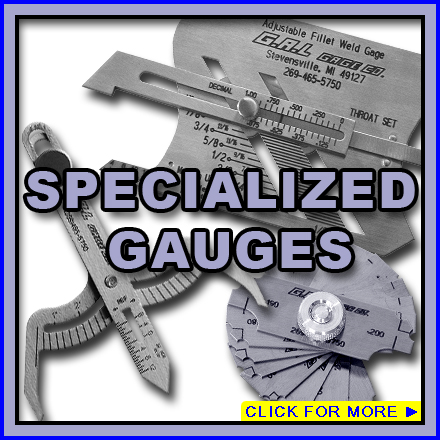Recognizing Gauge Fillet Weld: A Comprehensive Overview for Welders
The Ultimate Guide to Fillet Weld Quality Control: Making Certain Strength and Sturdiness in Your Welded Joints
In the world of welding, guaranteeing the strength and toughness of fillet welds is vital for the honesty of welded joints. As we get started on this exploration of fillet weld quality control, we will certainly uncover important factors that affect weld stamina, dive into efficient assessment techniques, and go over approaches for avoiding typical weld flaws.
Value of Fillet Weld Quality Control
Making sure proper fillet weld quality control is extremely important in ensuring the structural honesty and longevity of bonded elements in various industries. Fillet welds are frequently used in structural steelwork, bridges, stress vessels, pipelines, and various other essential facilities where the strength of the weld is important to overall safety and efficiency. Quality assurance procedures such as aesthetic evaluations, non-destructive testing, and adherence to welding treatments aid recognize possible flaws like absence of fusion, insufficient infiltration, damaging, or extreme reinforcement.
Key Elements Impacting Weld Strength
Accomplishing optimal weld toughness needs careful consideration of different essential factors that affect the honesty and resilience of the bonded joint. The first essential factor appertains joint prep work, which includes cleansing the base steels to get rid of any type of pollutants that can compromise the weld. In addition, the fit-up of the joint is vital to guarantee correct infiltration and combination of the filler product.
The selection of the proper welding strategy and specifications additionally plays a considerable role in figuring out weld stamina. Variables such as heat input, traveling rate, and electrode angle can influence the high quality of the weld. Moreover, maintaining the right interpass temperature level throughout multi-pass welding is essential to avoid cracking and make sure a strong bond between the layers.
In addition, the choice of filler material and its compatibility with the base metals is critical for attaining high weld strength. Utilizing filler product with the suitable mechanical homes can improve the general stability of the weld. Lastly, post-weld warmth therapy and correct assessment methods are essential actions in ensuring the strength and longevity of the welded joint.
Inspection Techniques for Weld Stability

An additional important inspection approach is fluid penetrant screening, where a fluid dye is related to the weld surface area - Gauge Fillet Weld. The color seeps into any kind of surface-breaking flaws, making them noticeable under UV light. This technique works for spotting imperfections that may not show up to the naked eye


Ultrasonic screening is also widely utilized for evaluating weld stability. High-frequency noise waves are directed right into the weld, and any type of disruptions in the acoustic wave pattern suggest prospective defects like splits or absence of blend.
These inspection techniques play a crucial role in guaranteeing the top quality and integrity Your Domain Name of welds, eventually adding to the general stamina and resilience of bonded joints in commercial setups.
Protecting Against Common Weld Defects
In order to keep the structural honesty of welded joints in commercial applications, it is important to carry out preventative actions to address common weld defects. One typical defect is absence of blend, where the filler product fails to bond adequately with the base steels, resulting in vulnerable points in the weld. This can be protected against by ensuring appropriate warm control and making use of the right welding strategy.
One more regular problem is porosity, triggered by gas entrapment in the weld steel throughout the welding process. To avoid this, it is necessary to cleanse the base metals extensively, make use of dry electrodes, and preserve an More Help appropriate welding atmosphere with appropriate ventilation.
Furthermore, fractures in welds can compromise the joint's stamina. To avoid this defect, it is essential to control the cooling price after welding, utilize preheating when needed, and choose proper welding criteria.
Enhancing Bonded Longevity With Proper Strategies
One crucial approach to improve weld toughness is to make certain appropriate weld grain placement. By positioning the weld grain accurately within the joint, the weld's toughness and resistance to fatigue can be significantly boosted.
Additionally, using appropriate pre-weld and post-weld warm therapies can help reduce recurring anxieties and enhance the weld's sturdiness, making it more resistant to fracturing and failure with time. One more strategy to enhance weld toughness is to utilize premium welding consumables and base materials. Selecting the ideal filler metal and making certain the tidiness of the base metals can prevent incorporations and various other defects that can endanger the weld's toughness. By implementing these appropriate methods, welders can guarantee that their bonded joints exhibit remarkable toughness and sturdiness, fulfilling the finest requirements.
Verdict
In final thought, keeping excellent quality control criteria for fillet welds is essential for making sure the stamina and sturdiness of bonded joints. his comment is here By comprehending the crucial elements influencing weld toughness, using inspection methods for weld integrity, stopping usual weld problems, and using correct techniques, welders can enhance the general sturdiness of their welds. It is crucial to prioritize quality assurance procedures to produce trusted and resilient welded joints.
In the world of welding, making certain the stamina and longevity of fillet welds is extremely important for the stability of welded joints. As we get started on this expedition of fillet weld high quality control, we will discover crucial aspects that affect weld stamina, delve right into reliable assessment methods, and review strategies for avoiding common weld issues.Accomplishing optimal weld stamina needs cautious consideration of different vital factors that influence the honesty and longevity of the bonded joint (Gauge Fillet Weld).In final thought, maintaining high quality control requirements for fillet welds is crucial for guaranteeing the strength and longevity of welded joints. By recognizing the vital factors influencing weld strength, utilizing inspection techniques for weld integrity, preventing common weld problems, and using correct methods, welders can enhance the total toughness of their welds